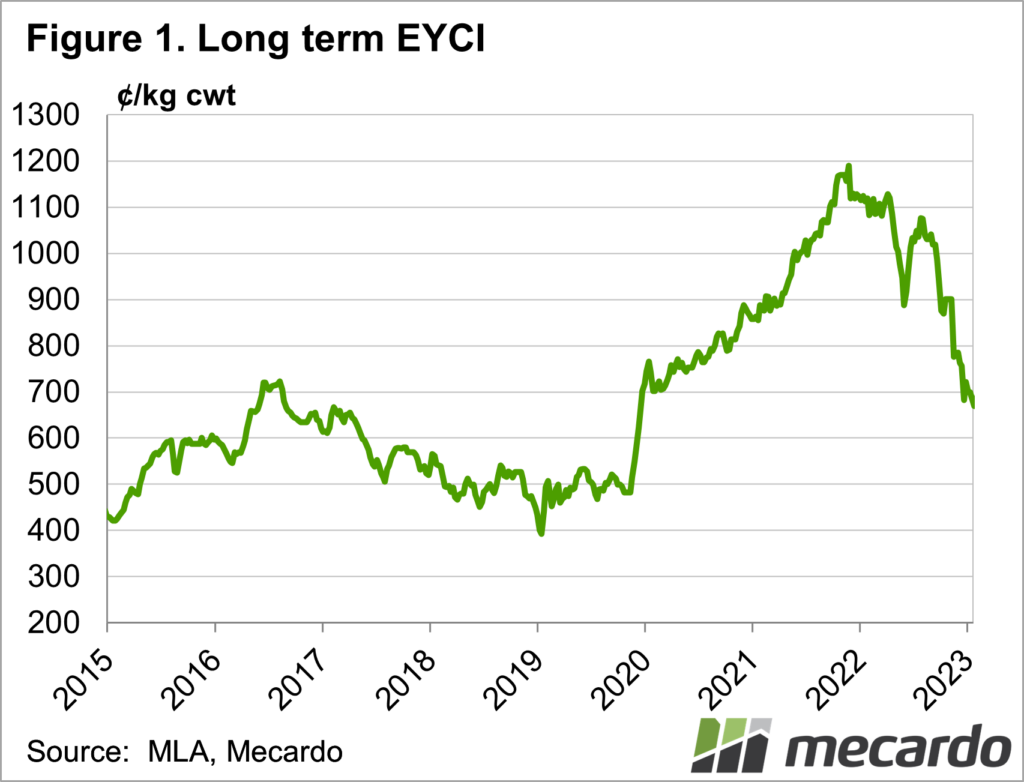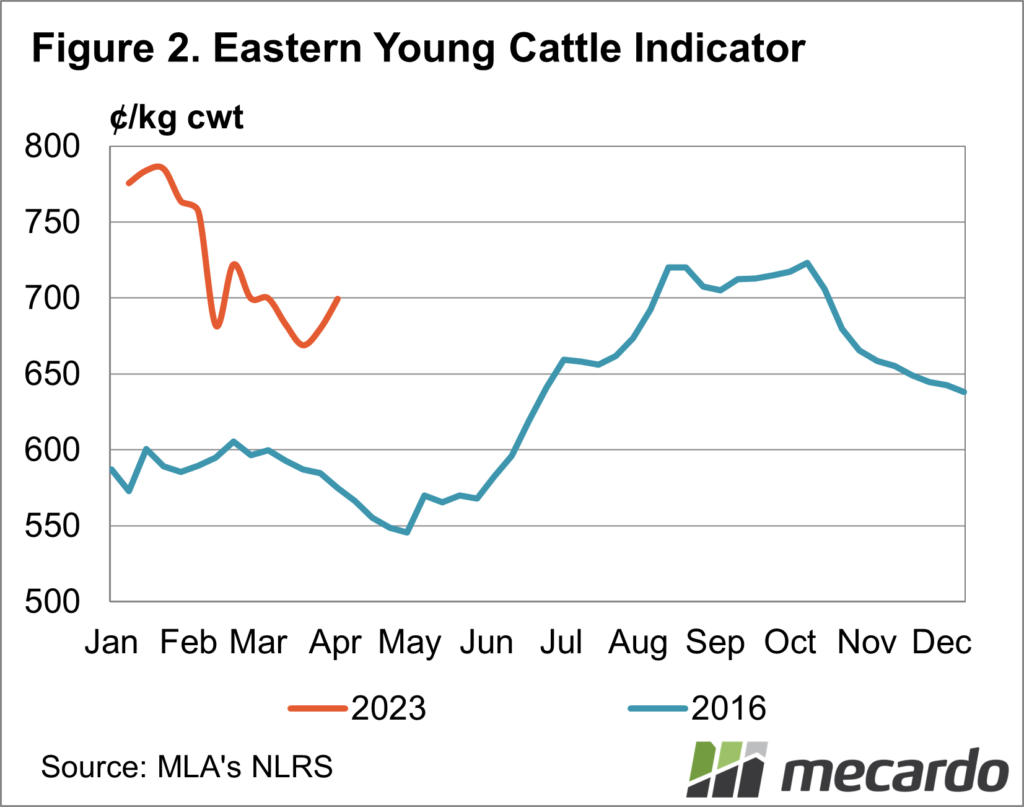Someone once said that markets tend to take the stairs up, and the elevator down. Looking at young cattle markets, we have seen just that, but it also seems like we might have reached what is a new bottom floor.
“Stairs up and elevator down” refer to market dynamics where prices rise up slowly, and come down fast. Figure 1 shows that we have seen this to some extent in Australian cattle markets. The Eastern Young Cattle Indicator (EYCI) started its rise with a rush in early 2020 but had a slower climb from there.
It took two years from the start of the rise to reach its peak. The EYCI hovered around the peak for around six months, before taking the elevator down, reaching a three-year low in 8 months. So what took two years to build, took 8 months to tear down.
In the crystal ball article back at the end of December we had the EYCI reaching 750¢ by autumn. Quite obviously this has been surpassed, with 750 acting as a minor speedbump for the fall in January and February before it headed through the more serious support level of 700¢ in March.
What we do know is that markets tend to overcorrect, and the drop through 700ٚ¢ might have been such a move. The bounce back in the last fortnight somewhat confirms 700¢ as a solid level of support.
Another reason we could be close to the bottom comes down to seasonality. Before the market went crazy, it used to show a relatively reliable seasonality curve. The market was generally strong from January to March, fell in April and May before rallying in winter and peaking in spring. Figure 2 shows 2016 following this pattern.
The rapid herd liquidation, followed by a rapid rebuild, seasonality went out the window. Only now we might be returning to something near normal. This would suggest the coming month or so will be the low point for the year.
Thirdly, the Mecardo article last week showing the 90CL at a premium to the EYCI for the first time in 3 years is a solid pointer to support coming. Cattle prices being cheaper than beef point to increasing kill space and stronger competition for finished cattle.
What does it mean?
If there was still a futures market for Aussie cattle it would be in contango, that is, future prices would be stronger than current prices. The only issue impeding steady or higher cattle markets is the spectre of El Niño, which would see more cattle come to market than could be dealt with, which would put further pressure on prices.
Have any questions or comments?
Key Points
- Young cattle markets have collapsed this autumn, but have bounced back in recent weeks.
- The 700¢/kg cwt level still looks like solid support.
- There are a number of factors suggesting we’ve seen the low in the market.
Click on figure to expand
Click on figure to expand
Data sources: MLA, Mecardo














